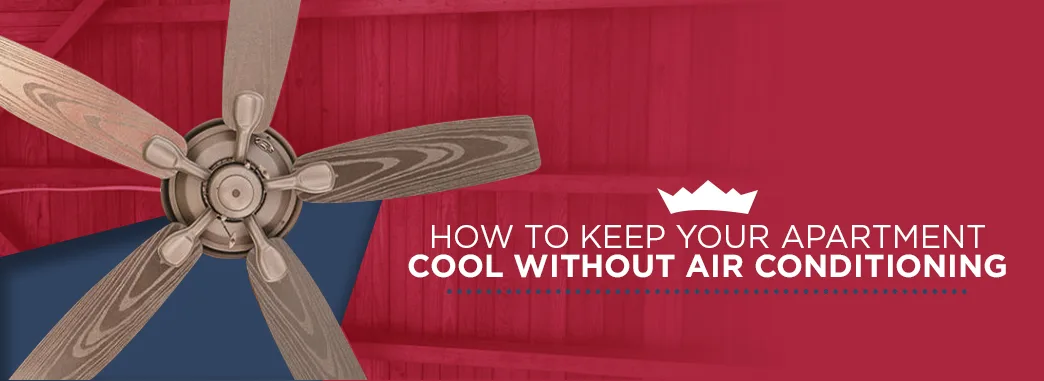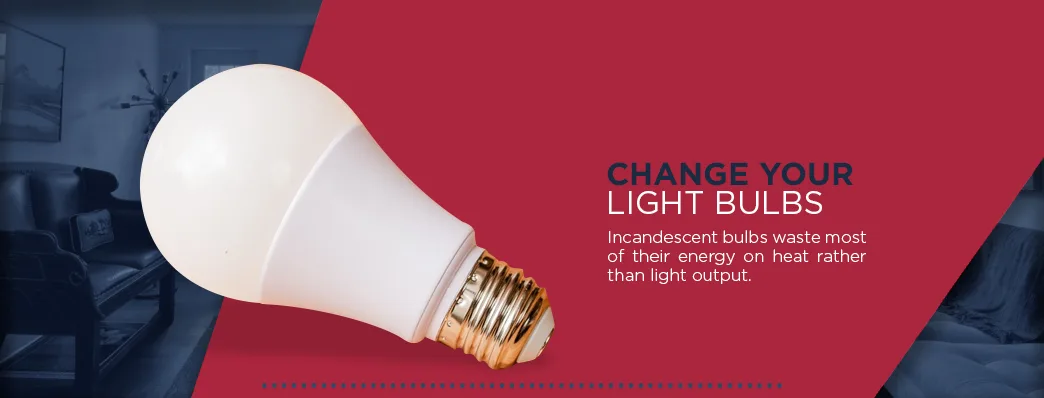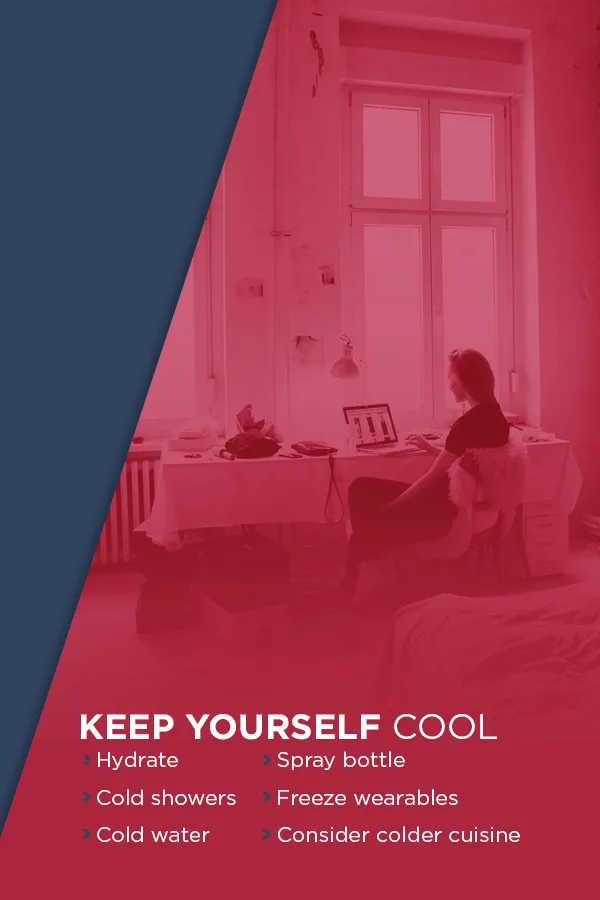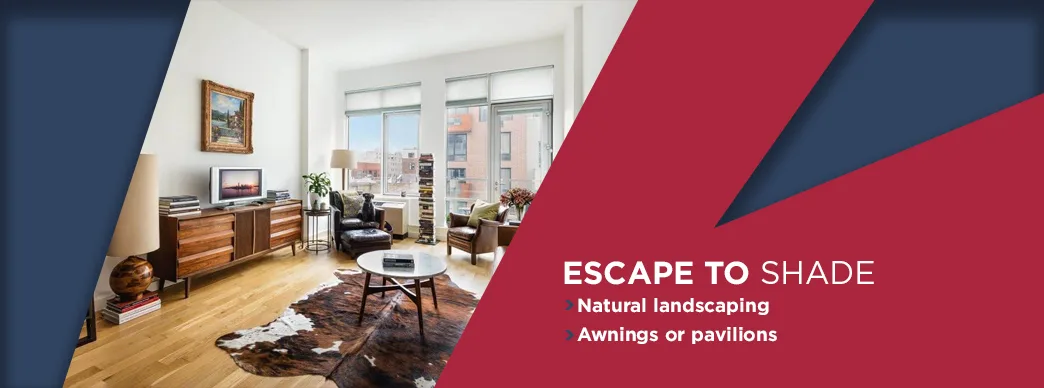
We’ve all been there: sweltering in an apartment during the hottest part of July. Not cool.
You don’t need to sweat the warm days of summer if your air conditioning (AC) unit is temporarily out of order. Knowing how to cool a room without AC in the event of an air conditioning emergency can save you from short-term discomfort. Check out these seven easy ways below to know how you can keep a room cool in summer without AC.
Request Rental Info
1. Utilize Your Fans
Never underestimate the power of your fans. With a little ingenuity, you can transform an array of common household fans into summer lifesavers.
The time-honored method: a bowl of ice water strategically placed in front of a box fan. This is one of the best ways to keep an apartment cool without air conditioning, and the resulting wave of cold air feels like heaven on a hot afternoon. If you come home and it feels like you’ve stepped into an oven, break out a fan and a bowl of ice water to cool hot rooms fast.
In lieu of ice water bowls, fill plastic bottles with water and stash them in the freezer. Any plastic bottles will work, but if you have plenty of room in your freezer, convert two-liter bottles into solid blocks of ice for maximized fan-based cooling. Keep in mind that condensation will pool under the bottles as the ice melts, so protect your carpets and wood floors from moisture damage by setting your ice bottles on water-resistant surfaces like baking sheets or large plastic lids.
- Cross-breezes: Experiment with cross-breezes by aiming one fan into the air stream of another fan. Want to supercharge the cross-breeze method? Place your ice bowl or frozen bottles in front of both fans — or an army of fans, if you prefer.
- Cold sheets: Here’s a DIY home cooling hack: douse a spare sheet in cold water and wring it out or run it through a quick spin cycle in the washing machine. Then place a fan under a table — aimed outward and slightly upward — and drape the damp sheet over the table to hang in front of the air stream. Refresh the sheet’s water content by gently misting it with a spray bottle. Protect wooden tabletops from excess moisture with an absorbent towel, if necessary.
- Bathroom and kitchen fans: Even built-in bathroom fans and the exhaust fan over your kitchen stove — if the kitchen fan vents outside — will help. These types of fans allow hot air near the ceiling to escape while drawing cooler air upward for improved air circulation in your home.
- Ceiling fans: If you have ceiling fans, set the blade rotation to spin counterclockwise in the summer. Counterclockwise rotation of the angled fan blades will pull cooler air upward to circulate throughout the room.
2. Secure the Area
Keeping hot air out of your environment is a lot easier, and faster, than cooling down a hot room in the middle of August.
- Weatherstrip: When you feel stifled by indoor heat, it may seem counter-intuitive to seal your home against air infiltration. But even small openings around windowsills and doorways allow hot drafts to seep inside while cooler air leaks out. Make sure that all windows and doors are closed tightly during the day, when the heat is hottest, and apply weatherstripping to seal any gaps between doors and frames.
- Curtains: Blackout curtains work like a sunshade on your car windshield: they keep sunlight out and prevent the greenhouse effect from occurring between the sun and your window glass. Rooms with blackout curtain-covered windows are considerably darker inside and may require artificial light supplementation, but the trade-off is that your home will feel cooler and more comfortable. For best results, choose blackout curtains with white or reflective backings.
- Blinds: Although blackout curtains are your best defense against hot windows, honeycomb blinds and ordinary curtains also offer a measure of protection. In a pinch, cover windows with two layers of sheets: a light-colored sheet facing outward to help reflect the sun and a dark-colored sheet to block out heat from the sunlight. You can also use a thicker blanket in place of a sheet for the dark outer layer.
- Close doors: Close off any unoccupied rooms in your home — except for the bathroom, if you choose to run the bathroom fan for additional temperature management. With less area to condition, smaller spaces make it easier for your fans and wet sheets to keep a room cool in the summer without AC.
3. Change Your Light Bulbs

Incandescent bulbs waste most of their energy on heat rather than light output. It may not seem like light bulbs produce enough heat to make a significant impact, but incandescent bulbs generate light by using electric currents to superheat the filament inside the bulb, which means about 90 percent of the energy they generate is just heat. That level of intense heat from multiple incandescent bulbs in your house — combined with the number of usage hours — quickly adds up.
Time to make the switch to energy-efficient light bulbs, such as LEDs. Energy-saving light bulbs have rapidly grown in popularity for a reason: they cost a little more upfront, but in the long run, they cut down on heat and help you save money on energy bills too. Since LEDs last 15-25 times longer than incandescent lights, you’ll also save a chunk of change on replacement bulbs.
If buying new bulbs isn’t possible, shut off any incandescent lights in empty rooms and unoccupied areas of your home.
4. Turn Off Hot Appliances
Have you ever touched a running computer or brushed against an X-box during gameplay? Light bulbs are not the only electric heat conductors in your home. When it comes to your cooling efforts, all of your household appliances are guilty of sabotage.
Here are five easy ways to lower appliance heat:
- Unplug appliances: Even when not in active operation, appliances and electronic devices can still produce lower levels of heat and siphon electric energy. Pull the plugs.
- Put off household chores: Reserve vacuuming and laundry duties for cooler hours in the mornings or evenings. If you have a washer and dryer inside your apartment, make sure your dryer duct isn’t clogged with lint or any other obstruction, which can double or triple your drying time, resulting in energy waste and heat generation, while presenting a serious risk for fire hazard. Alternatively, if you have extra time and the necessary space, you can skip the dryer altogether and hang wet laundry on clotheslines or balcony railings.
- Limit daytime technology use: Check email on your phone instead of accessing your computer or laptop. Record television shows to watch in the evenings. Shut down your computers completely rather than resting them in sleep mode.
- Air-dry dishes: Turn off your dishwasher’s drying option during the summer months. Run your dishwasher later in the day to reduce the impact of this common household heat source.
- Avoid using stove and oven: Consider meal preparation alternatives that radiate less ambient heat, such as crock pots or rocket stoves, or delay using your stove top and oven until afternoon temperatures subside. Another great option is cooking outdoors on the grill: It’s barbecue season, after all!
Keep your refrigerator and freezer doors shut, no matter how tempting it may be to stick your head in the freezer or stand in front of an open fridge. Both of these kitchen appliances work hard to cool the foodstuffs within, but when they kick into high gear to maintain internal low temperatures, freezers and refrigerators heat the surrounding area — much like your outdoor AC unit. Do yourself and your electric bill a favor by cutting back on fridge runs, especially during the hottest part of the day.
5. Open Your Windows
In most climates, high temperatures begin to dissipate when the sun sets. When the sun heads toward the horizon, spring into action and open your windows — beginning with the windows on the upper level to encourage the departure of warm air that has collected near the ceiling. If your home features double-hung windows slide the top portion of the window open a few inches for the same purpose, then raise the lower window section fully for greater circulation of the cool evening breeze if one exists.
The goal of opening your windows now after keeping your home sealed earlier is all about creating airflow when cooler air arrives. Once your windows are open, place fans on all of your windowsills, or as many windowsills as possible, and aim the air streams outward. This technique releases more heat from your environment, bringing the temperature of your home down faster than turning the fans inward. Dampen spare sheets with cold water, then hang them over open windows and screen doors to cool incoming breezes even more.
6. Keep Yourself Cool
Fans, cold water bottles and blackout curtains are always to keep your apartment cool without AC. Focusing on cooling your body cool too during a heat wave is one trick that can offer serious relief.
Here are a few ways to bring your temperature down:

- Hydrate: There are few things more refreshing than your favorite beverage poured over a glass of ice. Keep a supply of water bottles in the fridge, along with other drinks that replace electrolytes lost from sweating, to replenish your body’s hydration levels and provide overall body temperature relief.
- Cold showers: To avoid temperature shock, start your shower with warm water and gradually angle the faucet handle into the cold zone. A cold shower or soak in the tub will help keep heat at bay.
- Cold water: For quick temperature reduction, apply cold washcloths to pulse points such as your neck, wrists, elbows, ankles or the back of your knees. Keep a supply of wet washcloths in your freezer, folded and stored in plastic bags. Since more pulse points are found in your feet, immerse your tootsies in a bowl of ice water.
- Spray bottle: Mist your face, neck and arms while seated in front of a fan or under a ceiling fan. If you get hot at night, keep a spray bottle on your nightstand for quick relief — which is especially effective if you sleep near a fan.
- Freeze wearables: You’d be surprised: pajamas, bed sheets, pillows — even socks. To keep the fabric from absorbing freezer flavors or sticking to icy shelves, place each item in a plastic bag. For longer-lasting results, mist your clothing items with a spray bottle before stashing them in the freezer.
- Consider colder cuisine: Trading hot coffee for an iced cafe is easy enough in the summer months, but how about full meals that don’t require a hot stove? Try these recipes for cold dinners — followed by ice cream for dessert, of course.
You don’t have to rely completely on your air conditioner in the summer, especially if your AC is about to be repaired quickly by a courteous maintenance staff. Kick back with an ice-cold beverage in your cooler home and enjoy!
7. Escape to Shade

Regardless of the strategies you implement in your indoor living environment to keep it cool, the most important consideration is where the heat comes from. If the merciless sun beats down on your home all day, regardless of your climate zone, the uninterrupted exposure — especially from western and southern directions — will give you a challenge in cooling your space down.
Sometimes your home can hold more heat than the outside does, especially if you head for the shade. If you can withstand the heat and get outside for a bit, head to a local park or body of water and hang out near:
- Natural landscaping: Find a shady spot under the trees and set up a picnic. Trees absorb heat and provide cooling shadows.
- Awnings or pavilions: Many public parks have gazebos or party pavilions with picnic benches. These areas can be a good place to hang out and hide from the heat, especially if being inside just isn’t an option.
Bring a cooler with cold drinks, spray bottles and a couple of pairs of frozen socks to beat the heat all while getting some fresh air.
Looking for a New Home in Mechanicsburg, New Cumberland, Camp Hill or Harrisburg Areas?

If you’re ready to find a new home in Harrisburg or the West Shore, visit one of our rental communities today to see all we can offer in amenities — including air conditioning, pool memberships and finished basements.
Triple Crown Corporation communities also offer a variety of apartment and townhome configurations to choose from. With this many options and locations available, you are sure to find a space you can call home.




